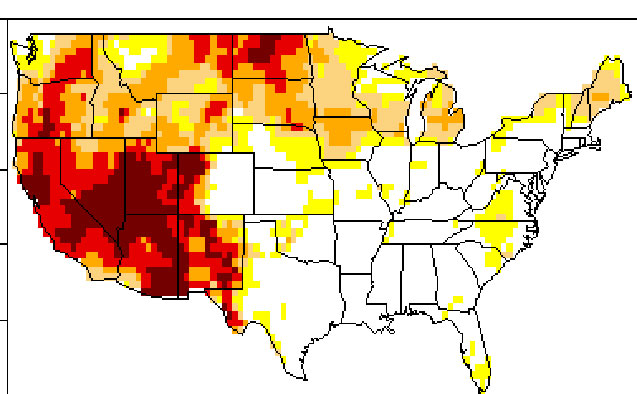Researchers win grant to create better drought-prediction tool

Aiming to increase the accuracy and timeliness of drought predictions in the United States, a team of environmental researchers at Wake Forest University has received a grant from the National Science Foundation to develop a new method for predicting drought.
The grant, “Scalable Models, Fast Computation and Predictability for Spatio-temporal Ordinal Data,” totals $209,999 and runs from July 1, 2022, through June 2025.

Erhardt
The end goal, said principal investigator Rob Erhardt, is to create a statistical model that can better pinpoint developing droughts across the country. The tool could be used by the government agencies that produce the U.S. Drought Monitor, he said.
The U.S. Drought Monitor map is developed and released each Thursday by the National Oceanic and Atmospheric Administration (NOAA), the U.S. Department of Agriculture (USDA) and the National Drought Mitigation Center (NDMC). It is used to trigger aid to farmers and to help officials such as local water resource managers make recommendations for conserving water.
Because drought happens incrementally, its effects can be underestimated. But losses from drought can add up to those inflicted by more immediate climate events such as hurricanes and tornadoes, according to the NDMC.
Right now, the U.S. Drought Monitor is an interpretation of various inputs from the preceding week. It categorizes drought in five levels, ranging from Abnormally Dry to Exceptional Drought. Modeling this type of data can be very computationally challenging.
The Wake Forest team is creating a statistical model made possible by new computing power and recent advances in statistical theory.
“We want to create the highest-quality predictions with the most accurate measure of uncertainty at the highest geographic specificity that computing lets us produce.” Rob Erhardt, associate professor of statistical sciences and associate chair of the Department of Mathematics and Statistics
Predictions of drought always come with a level of uncertainty because the variables change by geographic location. The Wake Forest team’s tool would report the level of uncertainty, to help local stakeholders make the best decisions for addressing drought in their region.

Hepler
Quicker, efficient calculations of conditions could help stakeholders make better decisions before the drought happens.
The cross-disciplinary research team tested the feasibility of the new drought-measuring tool during a pilot study. The model covered the western United States and included a small set of variables.

Lowman
The team includes co-principal investigators Staci Hepler, a statistician who will work with Erhardt to scale up the tool used in the pilot study; Lauren Lowman, a civil engineer and an expert on the mechanics of drought who is building the database of climate data; and Courtney Di Vittorio, a civil engineer who will work with stakeholders such as water resource managers to get feedback on the tool for its usefulness.

Di Vittorio
Hepler is an associate professor in the Department of Mathematics & Statistics. Lowman and Di Vittorio are assistant professors in the Department of Engineering. The makeup of the team will help the researchers ensure the tool they develop draws from the best data and is useful to stakeholders, Erhardt explained, and is an example of the “radical collaboration” that Wake Forest President Susan R. Wente has encouraged across the university.
“Excellent interdisciplinary science can arise when you have expert statisticians working alongside expert domain scientists,” Erhardt said. “The domain scientists help keep the team focused on the important scientific questions, while the statisticians ensure that the team is collecting and interpreting the data properly. These types of collaborations can advance both science and statistics. It’s a win-win.”
Categories: University Announcements
Wake Forest News
336.758.5237
media@wfu.edu
Meet the News Team
Wake Forest in the News
Wake Forest regularly appears in media outlets around the world.



